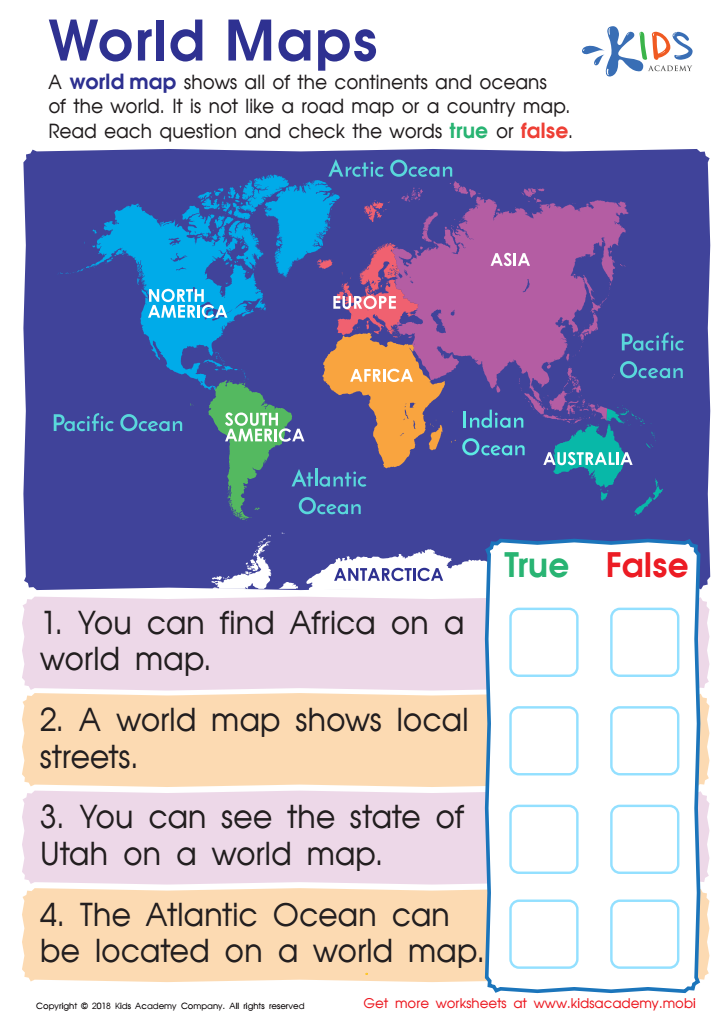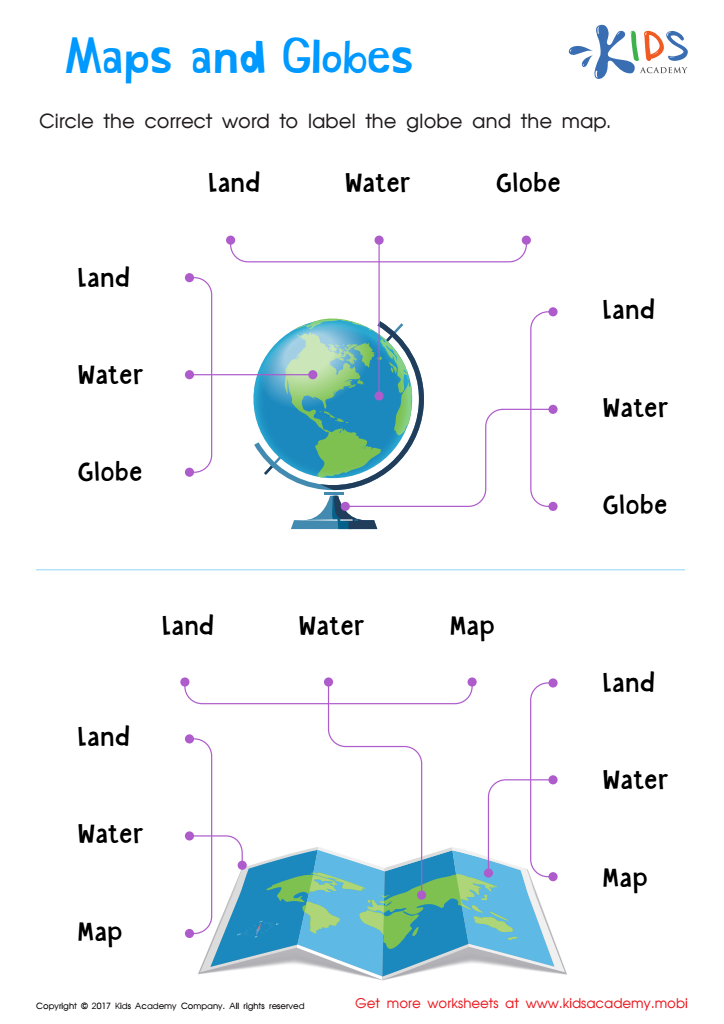Map reading Normal Worksheets for Ages 4-8
3 filtered results
-
From - To
Explore our engaging Map Reading Normal Worksheets designed for children ages 4-8! These worksheets are tailored to help young learners develop vital map literacy skills through fun and interactive activities. Your kids will enhance their ability to interpret maps, understand symbols, and track directions while enjoying colorful visuals and straightforward exercises. Perfect for preschool and early elementary students, our printable resources aim to make learning enjoyable and effective. Download now to provide your child with the foundational skills needed to navigate the world confidently, setting them up for success in future geography lessons! Start their adventure in map reading today!


World Maps Worksheet


Intercardinal Directions Worksheet
Map reading skills are vital for children ages 4-8 as they lay a foundation for spatial awareness, critical thinking, and problem-solving abilities. At this developmental stage, children are curious and eager to explore their environment. Introducing them to map reading fosters a sense of adventure and discovery, serving as an engaging tool to teach geographic concepts.
By learning to read simple maps, children enhance their ability to navigate both physical spaces and textual information. This skill encourages them to observe their surroundings critically, improving their observational skills and memory. Parents and teachers can utilize map reading to create interactive learning experiences, such as treasure hunts or community walks that reinforce map skills while also promoting teamwork and socialization.
Furthermore, map reading contributes to the development of numeracy and literacy skills; understanding symbols, scales, and directions involves counting and interpreting written information. When parents and teachers emphasize the importance of map reading, they equip children with essential life skills that not only boost academic success but also foster independence and confidence. Ultimately, nurturing these skills prepares children for future challenges in academics and daily life, making it a crucial focus in early education.

 Assign to My Students
Assign to My Students


















